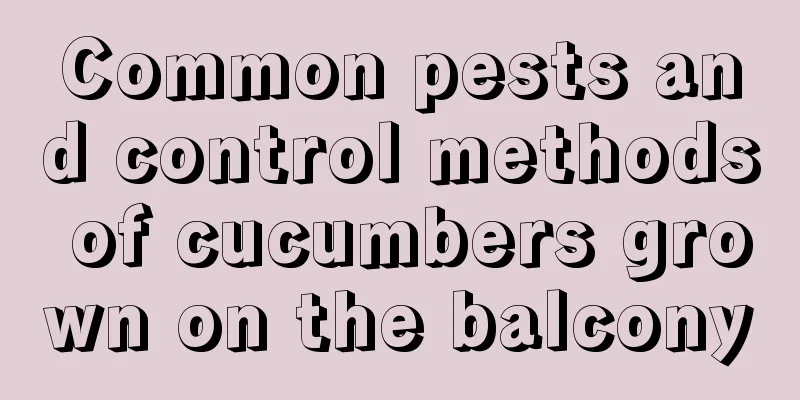Common pests and control methods of cucumbers grown on the balcony

Common cucumber pests: root-knot nematodesSymptoms: Mainly damages the roots. After the roots are infected, they are poorly developed, with many lateral roots, and spherical or conical tumors of varying sizes are formed at the root ends, sometimes in clusters. They are white and soft at first, then turn brown to dark brown, and the surface is sometimes cracked. The above-ground parts of the affected plants are poorly developed, the leaves are yellow, and they wilt and die in the early morning, and can easily be mistaken for wilt-diseased plants. Prevention and control methods: soil disinfection. Before planting, disinfect the soil with 1-1.5 ml of 1.8% insect mite emulsion per square meter mixed with 6 liters of water; during the growing period, irrigate the roots with 1,000-1,500 times dilution of 1.8% insect mite emulsion 1-2 times, with an interval of 10-15 days. Common cucumber pests: whitefliesWhiteflies have a wide variety of diets and can harm a variety of vegetables. The main pests are nymphs, which concentrate on sucking juice from the back of cucumber leaves, causing the leaves to fade, turn yellow, and wilt. In severe cases, the plants may die. When causing harm, it also secretes dew, which contaminates the leaves, causes fungal infection, affects the photosynthesis of the plant, and seriously affects the yield and quality. Prevention and control methods: Try to avoid mixed planting, especially cucumbers, tomatoes and beans. Old nymphs are mostly found on the lower leaves. Remove the old leaves and burn them. You can use 25% thiamethoxam (buprofezin) wettable powder or 2.5% cypermethrin or 20% cypermethrin (sulfuron) emulsifiable concentrate at a concentration of 2000 times for spraying once every 6 to 7 days for three consecutive times. You can also use smoke spray for fumigation 2-3 times in a row. |
<<: Clove Pests and Control Methods
>>: Common Pests of Impatiens and Their Control Methods
Recommend
What to do if the anthurium flower withers
1. Water appropriately Improper watering will cau...
Can rice bran be used to grow flowers (can rice bran be cooked and fermented and put into a flower pot to grow flowers)
Rice bran is a byproduct of rice, wheat and other...
Flowering period of tiger jasmine
1. Flowering period The flowering period of Tiger...
How to grow hyacinth in summer
Dormant period bulb cultivation Hyacinths hiberna...
Maintenance methods and management of Chinese photinia bonsai cultivation and care techniques
The plant of Photinia chinensis likes sunlight bu...
August strawberry planting management methods
In August, strawberry seedling cultivation enters...
Medicinal value of Potentilla fruticosa
1. Strengthen the stomach and clear away heat The...
Introduction to the advantages and disadvantages of Toffee Rose (Does Toffee Rose have a fragrant flower?)
Advantages and Disadvantages of Toffee Rose Toffe...
How to propagate the fortune tree
1. Seeding method (1) Seed selection: Use fresh s...
What are the cultivation methods and precautions of fairy cup
Fairy cup is one of the most succulent plants. It...
How to reproduce the hollyhock
What are the propagation methods of mountain plum...
When and how to plant edible roses
Edible rose planting time Edible roses are mostly...
Which month is best to plant chrysanthemums?
There are many varieties of chrysanthemum , and e...
How many days does cabbage seed sprout? How to grow seeds to make them germinate quickly?
Cabbage seed germination time Cabbage seeds begin...
The difference between spider silk, hairy silk and red silk
The difference between spider silk and hairy silk...









